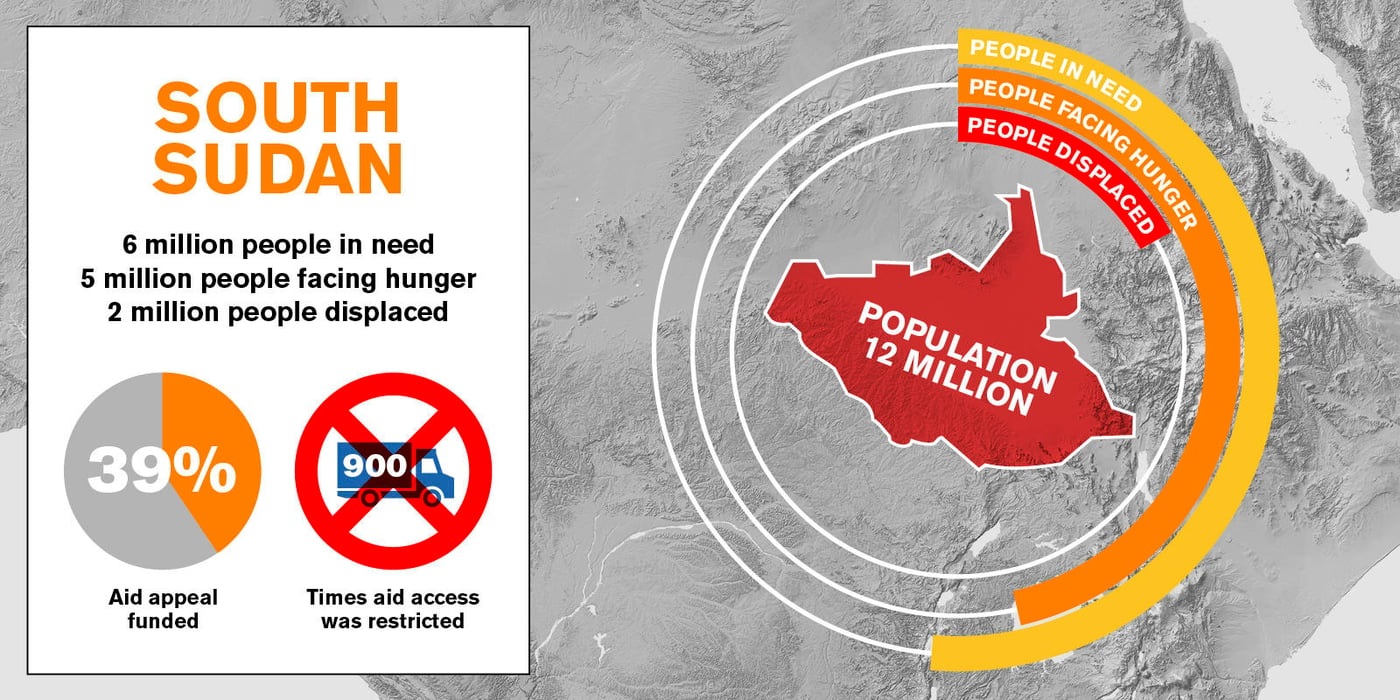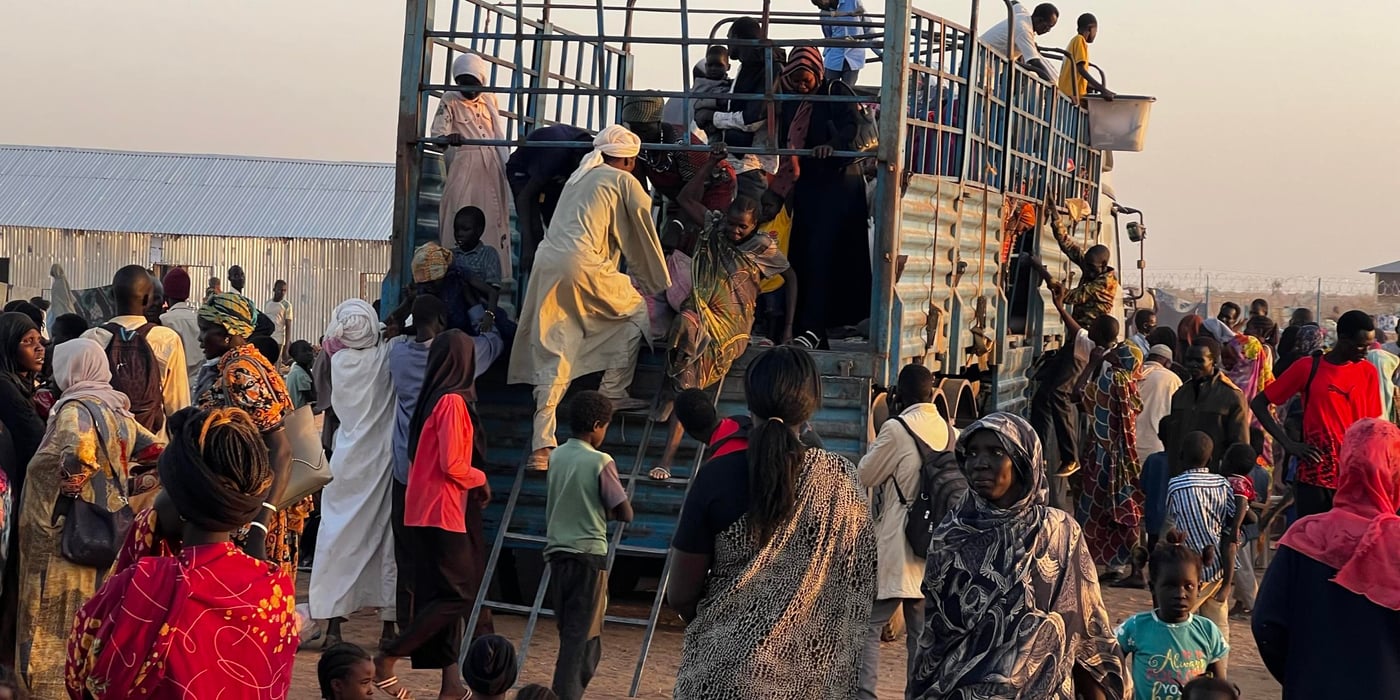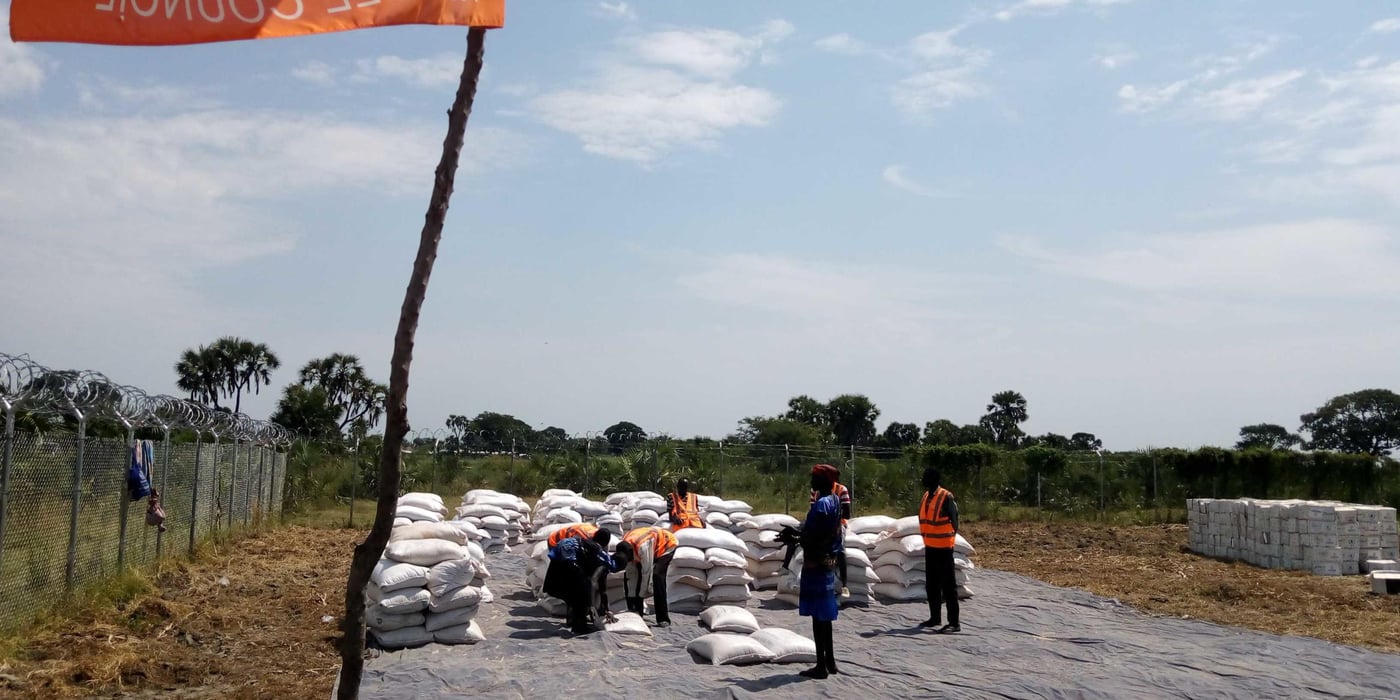
6 million
The number of people in need of humanitarian assistance - more than half the population. Despite the peace process, fighting and violence has continued in pockets of South Sudan. While the situation in Juba has indeed been much calmer since a ceasefire was declared Monday, fighting has now broken out in Leer. The humanitarian situation for ordinary people continues to get more difficult and many areas are hard to reach due to the security situation.
5 million*
The number of people expected to experience severe food shortages in the coming months. Hunger is on the rise in South Sudan. There are more people food insecure today than at any point since the war broke out two and a half years ago. An alarming half a million people have become food insecure in the past year alone. On top of this, experts warn that the risk of famine cannot be ruled out in parts of former Unity State and the greater Bahr el Ghazal region.
2 million*
The number of people forced to flee their homes because of conflict and violence over the past two years. The recent fighting in South Sudan’s capital, Juba, displaced some 36,000 people. But even before the current crisis, over 1.6 million people were displaced inside South Sudan, and an additional 720,000 people had fled to neighbouring countries including Ethiopia, Kenya, Sudan and Uganda Thousands of homes have been destroyed during the fighting, and many families have been displaced multiple times because of repeated attacks.
39
The percentage of South Sudan’s aid appeal that has been funded. Despite immense urgent needs, the humanitarian response has been left grossly underfunded. -If this trend continues, the consequences will be dire. It will result in a shortage of immediate lifesaving and long-term assistance, both of which are critical for the country’s recovery. With the recent fighting, the needs are likely to further increase.
900
The number of times in 2015 when access to communities in need was blocked or restricted. This is 14 per cent more than the previous year, and a 68 per cent increase from the year before that. Delivering aid in South Sudan is becoming more dangerous and challenging.
Read also: Thousands displaced by fighting in South Sudan
About NRC in South Sudan
The Norwegian Refugee Council has been working in Southern Sudan since 2004. It provides humanitarian assistance in former Central Equatoria, Jongeli, Lakes, Northern Bahr El Ghazal, Unity, Warrap and Western Bahr el Ghazal. NRC provided aid to almost 700,000 people in the country in 2015, by giving basic services such as food, water, housing and household items, and education and legal advice to people in need.
*This number has been rounded to the nearest million.



